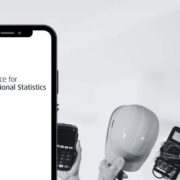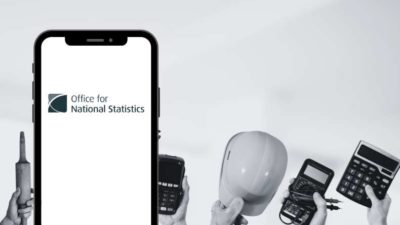With over 53% of all accidental dwelling fires coming from an electrical fault in 2019, there is a clear urgent need to improve electrical safety in British homes.
Coinciding with this figure, the Home Office provided statistics explaining that over 19,000 accidental domestic fires in the UK were the result of electrical issues, with a total of 26 fatalities occurring from electrical fires at home.
In an attempt to reduce these numbers, the UK government has issued that from 1st July 2020 or from 1st April 2021 for existing tenancies, an Electrical Installation Condition Report (EICR) must be conducted by a qualified professional and acquired before the commencement of any new tenancy to keep the standard of electrical safety in the private rented sector in England to the best they can be.
The report ensures that all electrical installations in the property, such as light fixtures and electrical sockets, are safe before the tenant moves in. Properties that pass the EICR will keep the certification for five years, however, when the EICR expires, a new one will need to be obtained.
Though, it is currently a challenge for professionals to conduct an electrical test during a global pandemic. As a result of social distancing rules and restrictions, experts are often advised not to conduct any evaluations in person to prevent any unnecessary contact from happening.
In this day and age, personal health must be a priority. For landlords, tenants and electricians there are multiple ways in which you have to make sure you are keeping safe and healthy.
Whether it’s advice on how to conduct home electrical tests as a landlord or tenant, or tips on how to do the safest socially distanced work for professionals, conducting safe EICR tests will require different techniques depending on the person involved. London Electricians 24/7 explain the different ways in which you can conduct these tests safely at home.
How to conduct the test at home
Like all electrical assessments in a property, it is always easier to physically conduct the check-up in person.
Although primarily requiring an expert to physically conduct the test in the property, in some instances which usually involve vulnerable tenants at higher risk of contracting the virus, the EICR will not be required.
This will only be accepted if there is written evidence that an inspection has been discussed and attempted.
However, if you don’t fall under this bracket, landlords with long-term tenants will need to find some way of accessing the property and make sure that the tests are conducted following social distancing requirements to prevent any possibilities of contracting Coronavirus.
As a result of the test being essential to the safety of future tenants, the report will usually be required to take place and will take into account any coronavirus safety precautions.
With this in mind, it is important for landlords to understand how to act accordingly and conduct any evaluations or tests in the correct manner.
This includes an understanding of general safety precautions regarding electrical safety and coronavirus.
Landlords must also inform tenants to obey any rules or government guidelines when conducting checks & inspections under the pandemic measurements.
A new way of ensuring the EICR test takes place is via a self-service check-in.
This approach involves tenants completing daily checks on their property to maintain the condition of electrical appliances and hotspots on a regular basis.
An alternative method is via live inspections which are completed by property inspectors reviewing and conducting evaluations by video link.
These two socially distanced ways of performing electrical home safety reviews are safe ways of preventing any coronavirus violations or mishaps, however, there is an increased chance of errors and problems being missed when a professional contractor is not present.
For landlords or existing tenants, there is an element of pressure when conducting home checkups.
London Electricians 24/7 expressed:
“It is fundamental that you must have a good knowledge and understanding of the dangers of electricity and how to conduct safe and thorough examinations.”
“A general ability to follow clear instructions given by a professional is essential as this will guide you clearly and accurately through important stages, helping you become aware of any possible dangers before and during the test.”
“After listening to detailed instructions by a professional electrician prior to the EICR test, in order to ensure yours and the electrician’s safety, the electricity must be turned off for the test to take place.”
“You will need to bear this in mind if there are already tenants in the property as failure to turn any electrical components off whilst conducting the test could prove fatal, so always double-check.”
“One main piece of equipment to have when conducting any electrical inspection at home is insulated and suitable clothing such as gloves and dielectric shoes.”
“These will help prevent and absorb any electrical shocks from majorly harming you.”
“For workers and tenants coming in contact with each other, wearing the correct PPE safety gear is crucial. Recommended items for maximum safety include PPE face coverings and safety glasses.”
“For electricians as well as landlords and tenants, when conducting an electrical test, despite any prior initial assessments, never assume that an electrical component you are handling in a residence is safe.”
“Always run the necessary checks. To assess the safety of the property you should follow recommended steps of a visual test, earth test (for outdoor living), resistance test, and a leakage test. These can all help reduce the risk of electrical hazards occurring at home and in outdoor spaces.”
“Making sure you are 100% knowledgeable on the 18th edition of the Wiring Regulations is also vital for conducting the EICR report.”
“Not only will this help you locate hazards and faults, but it is also a requirement for properties to ensure these regulations are met when conducting the report and final test.”
“We know that having accurate and up to date industry knowledge is key to identifying the warning signs of electrical safety, but let’s not forget it is also critical to know the best type of safety equipment for dealing with electrical faults.”
“It’s key to always have the most proven and advanced equipment for the job.”
“An approved voltage indicator (AVI) is a key piece of equipment used for checking electrical currents within a property.”
“This device is an absolute must as it determines the presence/absence of electricity in an area that you are unable to identify just by looking at it.”
“Primarily used to detect AC voltages on sockets, switches, outlets, circuit breakers, when used correctly it could save your life.”
“Although the correct equipment which has been approved and verified by a professional is always a safety essential, the main advice is to always seek expert advice if you are unsure.”
“A detailed review by a professional is always the safest option so if you are a tenant or a landlord, I would recommend maintaining a safe social distance from a contractor and allow them to conduct the test.”
Taking these guidelines into consideration could help you prevent any unnecessary electrical injuries or health-related issues regarding coronavirus.
Ultimately helping perform safe and correct reviews and evaluations to properties with the intention of reducing the number of electrical fires happening at home.





















Comments